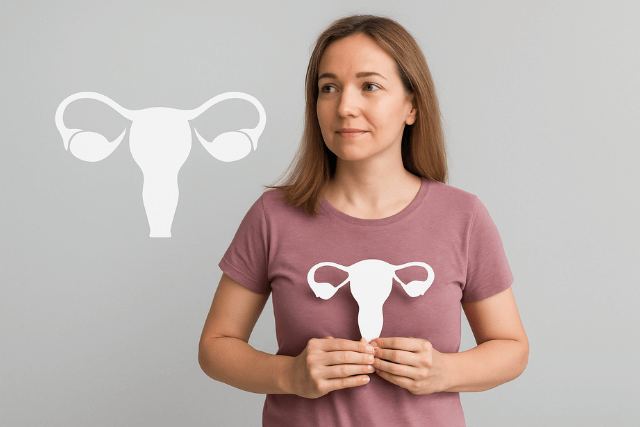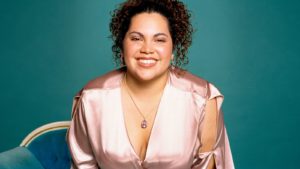What Is Tubal Reversal?
First, we define the procedure. Tubal Reversal After 35 starts with reconnecting fallopian tubes. Surgeons remove scar tissue, then stitch tube segments using tiny, precise sutures under a microscope—this is microsurgery. It often takes two to four hours and uses general anesthesia. Doctors prefer laparoscopy in most cases because it’s less invasive and promotes faster healing.
Following surgery, patients avoid heavy activity for one to two weeks. Then, around three months later, they undergo a hysterosalpingogram a dye test filmed with X‑ray to confirm the tubes are open. Meanwhile, they monitor their cycles. Once tubes are confirmed, they can resume trying for conception.
This process aims to restore natural fertility. Unlike IVF, which bypasses tubes, this method revives your body’s own function. Recovery time varies, but most women resume normal life within two weeks. Then, they track cycles and hope for natural conception within months. That’s the essence of tubal reversal.
Why Age Matters: Pregnancy After 35
Now, you may ask: “How does age affect my chances?” Simple: after 35, egg quality and number decline more sharply. That leads to fewer chances and increased risk of chromosomal errors. However, many women over 35 still become pregnant naturally or via assisted methods.
Specifically, egg reserve drops gradually from the late 20s, but after 35, the decline accelerates. Clinicians call this the “advanced maternal age” category. Therefore, women over 35 may require medical evaluation before trying reversal. Still, success rates remain strong enough in many cases.
Moreover, doctors stress the importance of overall health. Women over 35 often have higher rates of hypertension, diabetes, or thyroid issues, which can affect fertility. So they recommend screening before surgery. This makes pregnancy safer and more likely.
Success Rates Over 35: What the Data Says
To truly understand success rates over 35, we look at reliable studies.
a) Large Registry Data
A registry covering 8,000 cases from 2000–2011 shows:
- Under 30: 81% pregnancy rate
- Age 30–34: 75%
- Age 35–39: 65%
- Age 40+: 34%
This shows that while fertility declines, rates remain meaningful for those in their late 30s.
b) Lakeshore Clinic Study
The Lakeshore Reproductive Endocrinology study reports:
- Ages 35–39: 63% chance of pregnancy
- Ages 40+: 42%
This again highlights viability past 35.
c) Spanish Clinics and Meta‑analysis
One meta‑analysis of multiple studies found:
- Women over 35 had a 45.5% pregnancy rate
- Women 35 and under had 85.7%
Another study from a Dutch hospital reported:
- Ages 40–45: 44% live birth rate
- Ectopic pregnancies only 4%
Therefore, although success rates decrease, many women still become pregnant post-reversal.
Fertility After Tubal Reversal: Key Factors
Even after age, key factors shape fertility after tubal reversal:
- Tube length: Success is higher if >4cm of healthy tube remains commonly seen after clips or rings.
- Initial method: Reversal after clips/rings offers better results than after burning or removal methods.
- Surgeon skill: Microsurgery requires steady hands. Choose a surgeon with proven experience.
- Overall health: Good ovarian reserve, healthy uterus, and male partner’s fertility all matter.
- Lifestyle: Maintain optimal weight, quit smoking, and manage stress to boost fertility.
Combining age with these factors gives each woman a personalized chance. Still, tubes and health play big roles too.
What to Expect: Timeline, Procedures, and Risks
When considering tubal reversal:
- Before surgery, your doctor orders tests: ovarian reserve (AMH, FSH), general health screening, semen analysis for your partner, and imaging.
- On surgery day, laparoscopy or mini-laparotomy restores tubal patency via microsutures.
- After surgery, expect mild pain, bloating, and fatigue for one to two weeks. Your doctor may prescribe light activity only.
- At three months, take the dye test.
- Then, you can begin trying to conceive.
Pregnancy timing:
- Most get pregnant within six to nine months. Some conceive within 12, others up to two years.
Risks:
- Ectopic pregnancy is a known risk, at about 5–15% post-reversal, compared to 2–3% in the general population.
- Surgical complications are rare but include bleeding, infection, and anesthesia risks.
Comparing Options: Tubal Reversal vs. IVF
Tubal Reversal (Pros/Cons)
Pros:
- Natural conception
- Long-term pathway, only one surgery
- Multiple pregnancy chances
Cons:
- Higher upfront cost, usually not covered by insurance ($5,000–15,000)
- Longer wait to conceive
- Slightly increased ectopic risk
In Vitro Fertilization (IVF)
Pros:
- Bypasses tubes entirely
- Fast turnaround (within one menstrual cycle)
Cons:
- More cycles may be needed
- Emotional, physical toll (OHSS risk)
Tailoring Choices
For women aged 35–39 in good health, tubal reversal often offers better value and natural benefits. Women over 40 with declining egg reserves might find IVF more efficient and practical. Always consult with fertility specialists.
Preparing for Pregnancy After Reversal
To maximize your chances:
- Get to a healthy weight – BMI between 19 and 24 is ideal.
- Eat well – include whole grains, lean proteins, fresh fruits and vegetables
- Take prenatal vitamins – especially folic acid (400–800 mcg)
- Monitor ovulation – use kits or apps to time intercourse
- Track menstrual cycles – look for regular patterns
- Schedule follow-up visits – evaluate progress at 3, 6, and 12 months
- Include your partner – support and stress reduction matter
- Stay optimistic – emotional health impacts fertility outcomes
Emotional & Financial Considerations
Emotional Journey
Each step in the process such as surgery, waiting, and patency testing can stress your relationship and self-esteem. Therefore, many women benefit from counseling, support groups, and peer communities, which help manage anxiety and sustain hope.
Financial Planning
Because most insurance doesn’t cover tubal reversal. Factor in costs for pre-surgery testing and post-surgery monitoring.
FAQs
Q1: Does age 35+ significantly lower my chance?
No, while it reduces rates slightly, women aged 35–39 still have a good 60–65% pregnancy chance post-reversal. Those over 40 have about a 42% pregnancy chance.
Q2: Is it painful?
Most women report mild discomfort that subsides within days. Full return to normal activity happens quickly.
Q3: Could I still need IVF after reversal?
Yes, if patency fails or egg reserve is low. Many women use reversal first, then proceed to IVF if needed.
Q4: Will insurance cover it?
Rarely. Clinics charge $5,000–15,000. By comparison, IVF costs more per cycle.
Final Thoughts:Tubal Reversal After 35
In conclusion, Tubal Reversal After 35 is a medically viable path toward natural pregnancy. Though age and tube condition influence outcomes, many women in their late 30s and early 40s achieve pregnancy and deliver healthy babies.
Key takeaways:
- Success rates remain solid: ~65% for ages 35–39, ~42–45% for over 40
- Egg health, tube length, surgeon expertise, and overall health matter
- Risks exist but are manageable with good care
- Choose based on personal goals, finances, and medical evaluation
If you’re exploring this option, start with a fertility surgeon. Discuss your tube status, ovarian reserve, and chances. From there, you can select a path with confidence—and perhaps re-open the door to motherhood.










